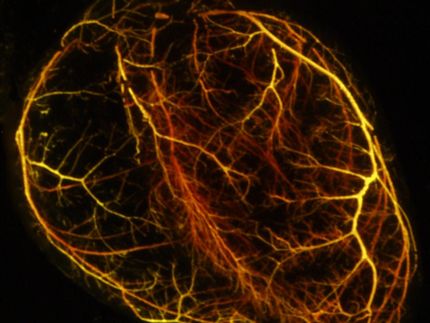Scientists identify genetic clues for a big heart
Advertisement
Bigger isn’t always better, even when it comes to the body’s most vital organs. An enlarged or thickened cardiac muscle can actually force the heart to work harder to pump blood throughout the body, weakening the organ until it eventually wears out. Despite the disastrous consequences of oversized organs, researchers have just begun to uncover the circuitry of signals that govern growth.
What they do know comes in large part from genes of the tiny fruit fly, Drosophila melanogaster. Over the years, biologists have deleted or suppressed tens of thousands of genes in the fly genome, aptly naming each one after the unusual characteristics displayed by the resulting mutants. Deletions in a gene known as Hippo generate flies with unusually large organs. Likewise, defects in a gene called Yorkie create flies with strikingly small organs.
Now, Duke researchers have shown that a different gene, which goes by the decidedly more staid moniker Raf, can act as a type of switch that turns on Yorkie to make fly hearts grow bigger. They discovered that these hearts bulked up by expanding the size of already existing heart cells, rather than adding new cells.
Our genes are similar enough that the fly study gives insight into a dangerous enlargement of the heart in humans called cardiac hypertrophy, which can result from high blood pressure or certain inherited conditions like Noonan syndrome.
“Our finding helps us to better understand how the human heart responds to disease," said Matthew J. Wolf, M.D., Ph.D., senior author of the study and associate professor of medicine at Duke University School of Medicine. “The question remains, why does it choose to add on mass rather than proliferate new cells? If we could solve that riddle, then we could find ways to manipulate the system to help hearts heal after injury.”
During cardiac hypertrophy, the walls of the heart thicken, decreasing the size of the cardiac chambers and eventually restricting the heart’s ability to pump blood. If left untreated, hypertrophy can cause heart failure, which is usually fatal.
Wolf modeled this condition by activating the Yorkie gene in fruit flies. Unlike the human heart with its complex array of four chambers, four valves, and multiple vessels, the fruit fly heart is simply a linear tube composed of a single layer of 104 heart cells. Wolf and his colleagues were able to visualize enlargement of the tiny beating heart with a method called optical coherence tomography that is something like the echocardiograms used to diagnose heart failure in humans.
Using this method, the researchers could see that the heart walls of the mutants were thicker than normal, creating a much smaller central chamber through which to pump blood. The mutant flies also had weaker heart muscles and shorter lifespans than normal flies.
The researchers then took out the fly hearts and counted the number of cells to determine whether the heart growth was the result of more cells or bigger cells. The numbers stayed the same, indicating that the cells were growing larger.
The finding reminded Wolf of a fly he had encountered many years back, one whose growth had been fueled by too much activity of a gene called Raf. In humans, mutations in this gene cause Noonan syndrome, an inherited condition that is characterized by a number of physical defects, including an enlarged heart.
Wolf decided to breed fruit flies with Yorkie and Raf mutations to see how the two were related. He took flies that had thin hearts due to a genetic deletion in Yorkie, and bred them with flies that had thick hearts caused by an activated form of Raf.
By looking at the offspring of these flies, he could determine whether the two genes were connected in the same signaling pathway or if they were acting independently to tell hearts to grow bigger or smaller. To his surprise, the genes cancelled each other out, yielding flies with hearts of perfectly normal size. In other words, Raf couldn’t activate organs to grow larger without having Yorkie there to switch on.
Next, Wolf would like to see if these same connections hold true in other models of human disease. He has already acquired a number of transgenic mice and plans to manipulate both Raf and Yorkie to measure their effects on the mouse heart.
“Ultimately, our goal is to try to understand how this pathway influences cardiac hypertrophy, not only within the context of specific conditions like Noonan syndrome, but also in the more general context of hypertension and high blood pressure, with the hopes of finding new targets to treat this disease,” said Wolf.

























































